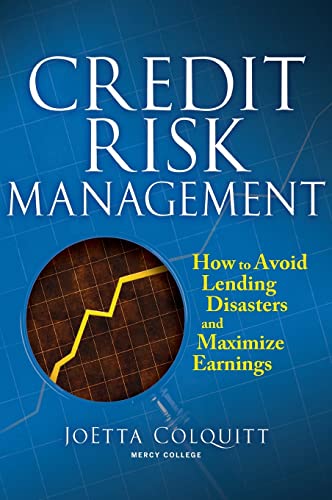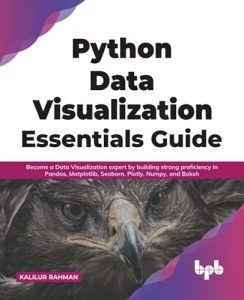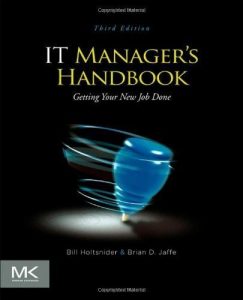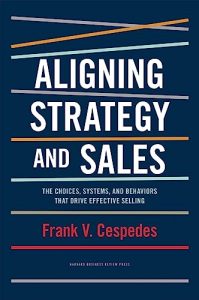1. Credit Risk Management: How to Avoid Lending Disasters and Maximize Earnings
Authored by Joetta Colquitt, this insightful book is a must-read for anyone involved in financial services. It delves into the complexities of credit risk management, highlighting how to navigate lending pitfalls effectively. With real-world examples and practical strategies, Colquitt emphasizes the importance of understanding borrower behavior and market conditions. This book offers a robust framework for both novice and seasoned professionals in finance, helping them enhance their decision-making and risk assessment capabilities. An essential guide for maximizing earnings while mitigating risk.

2. Credit Risk Frontiers: Subprime Crisis, Pricing and Hedging, CVA, MBS, Ratings, and Liquidity
This comprehensive work by Tomasz Bielecki, Damiano Brigo, and Frederic Patras presents a thorough examination of credit risk challenges, especially in light of the subprime crisis. It rigorously analyzes pricing, hedging methods, and liquidity risks, all critical for financial professionals making informed decisions. The authors weave complex theoretical insights with practical applications, making it accessible for readers at all levels. Understanding these issues is imperative for navigating modern financial landscapes and this book delivers on that front with a rich array of perspectives.

3. Managing Credit Risk: The Great Challenge for Global Financial Markets
In this collaborative effort from John B. Caouette, Edward I. Altman, Paul Narayanan, and Robert Nimmo, the authors confront the multifaceted challenges of managing credit risk in the increasingly globalized financial environment. They discuss theoretical frameworks as well as practical solutions to effectively balance risks and returns. This book is packed with invaluable case studies that illuminate the real impact of credit risk management strategies, making it a crucial read for any finance professional looking to stay ahead.

4. Counterparty Credit Risk and Credit Value Adjustment: A Continuing Challenge for Global Financial Markets
Jon Gregory’s book explores the intricate subjects of counterparty credit risk and credit value adjustments, critical aspects in mitigating financial losses. With the rise of financial engineering, Gregory provides practical solutions grounded in real-world examples and mathematical frameworks to tackle these challenges. The book is highly relevant for financial analysts and risk managers tasked with understanding and quantifying these evolving risks. Whether you are a newcomer or a seasoned expert, this book will enrich your understanding of the financial uncertainties in today’s market.

5. Credit Risk Assessment: The New Lending System for Borrowers, Lenders, and Investors
Clark R. Abrahams and Mingyuan Zhang present a modern take on credit risk assessment that incorporates contemporary lending practices. They provide a well-structured view on how to analyze creditworthiness effectively, ensuring success for lenders and borrowers alike. This book combines theory with practical insights, outlining clear methodologies for assessing risk in different lending environments. If you’re involved in assessing credit risk, this book is an indispensable resource that can help reshape your strategies for the better.

6. Understanding Market, Credit, and Operational Risk: The Value at Risk Approach
This book, co-authored by Linda Allen, Jacob Boudoukh, and Anthony Saunders, takes a holistic approach to risk assessment by integrating market, credit, and operational risks. It offers quantitative insights with a focus on the Value at Risk (VaR) method, a crucial concept for risk managers today. With accessible explanations and robust frameworks, this book is an essential reference for finance professionals seeking comprehensive knowledge on managing various types of risk in an organized manner.

7. Credit Risk Valuation
Manuel Ammann’s “Credit Risk Valuation” delves deep into the financial mathematics behind assessing credit risk. This title is particularly suited for quantitative analysts and finance professionals who need a deeper understanding of valuation models. The book methodically breaks down the complexities of credit risk, offering insights into innovative valuation techniques that can lead to more informed decision-making. If your work hinges on accurate credit assessments, Ammann’s book will be a valuable addition to your library.

8. Quantitative Credit Portfolio Management: Practical Innovations for Measuring and Controlling Liquidity, Spread, and Issuer Concentration Risk
Ben Dor, Dynkin, Hyman, and Phelps offer an essential guide for mastering credit portfolio management in this valuable resource. The authors discuss practical innovations and advanced methodologies for measuring various risk components, including liquidity and spread risks. With a focus on actionable insights, this book provides cutting-edge techniques and statistical tools that are invaluable for managers tasked with maintaining effective credit portfolios. A brilliant read for finance professionals eager to enhance their quantitative analysis capabilities.

9. The Standard & Poor’s Guide to Measuring and Managing Credit Risk
Arnaud de Servigny and Olivier Renault provide a definitive guide that emphasizes the key principles and methodologies of measuring credit risk. Their insights, drawn from extensive experience, focus on practical applications that benefit both practitioners and academics. Understanding the methodologies laid out in this guide is essential for effectively managing credit risk in any organization. The authors’ blend of theory and practical knowledge makes this book a must-have tool for financial professionals.

10. A Pragmatist’s Guide to Leveraged Finance: Credit Analysis for Below-Investment-Grade Bonds and Loans
Robert S. Kricheff’s essential read equips analysts with practical approaches to assess credit risk in leveraged finance. The book offers clarity on the nuances of analyzing high-yield bonds and sub-investment-grade loans. Kricheff provides real-life case studies that illustrate key concepts and highlight analytical techniques. This guide is highly recommended for anyone keen on developing their credit analysis skills, especially in a complex and often tumultuous market.





































